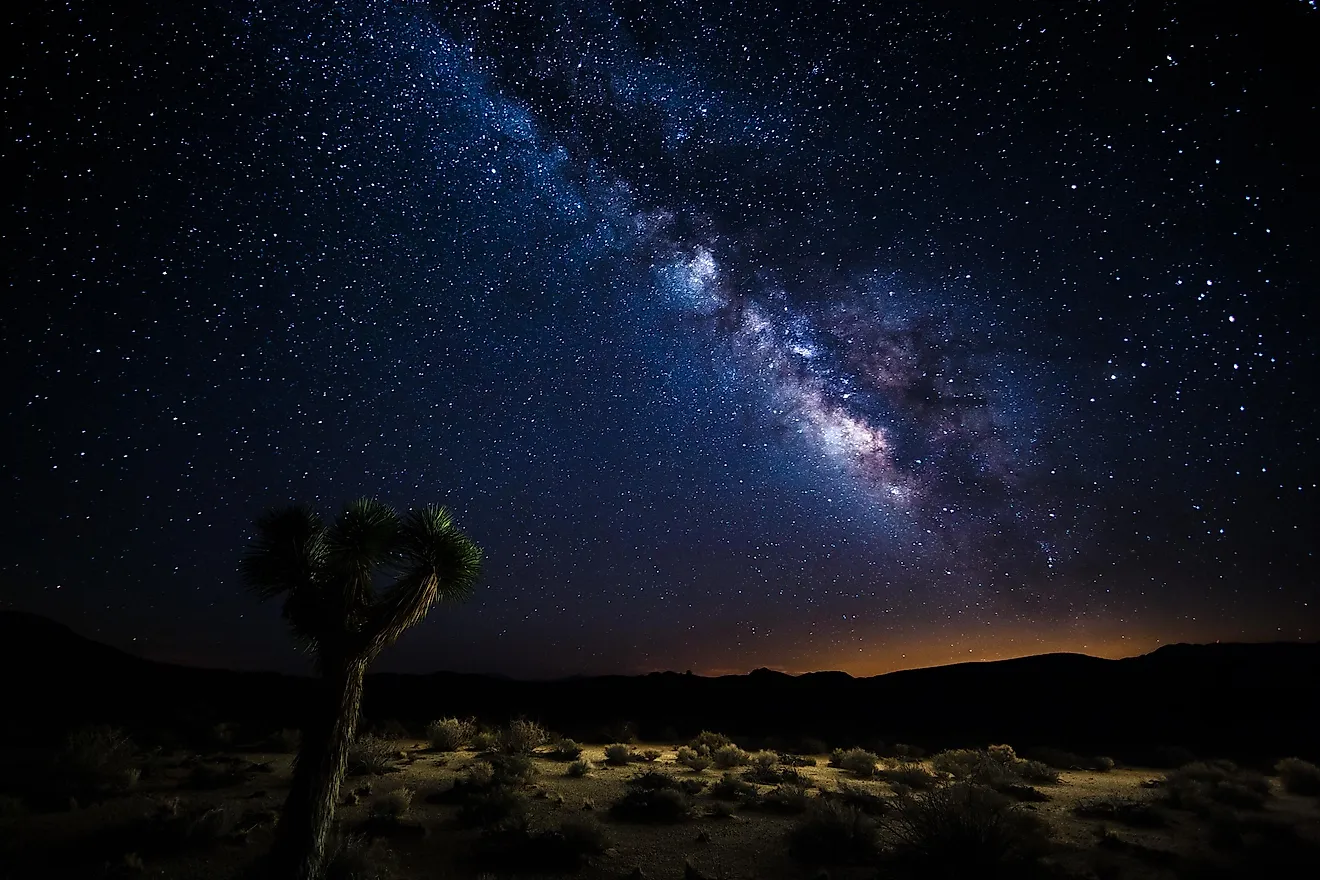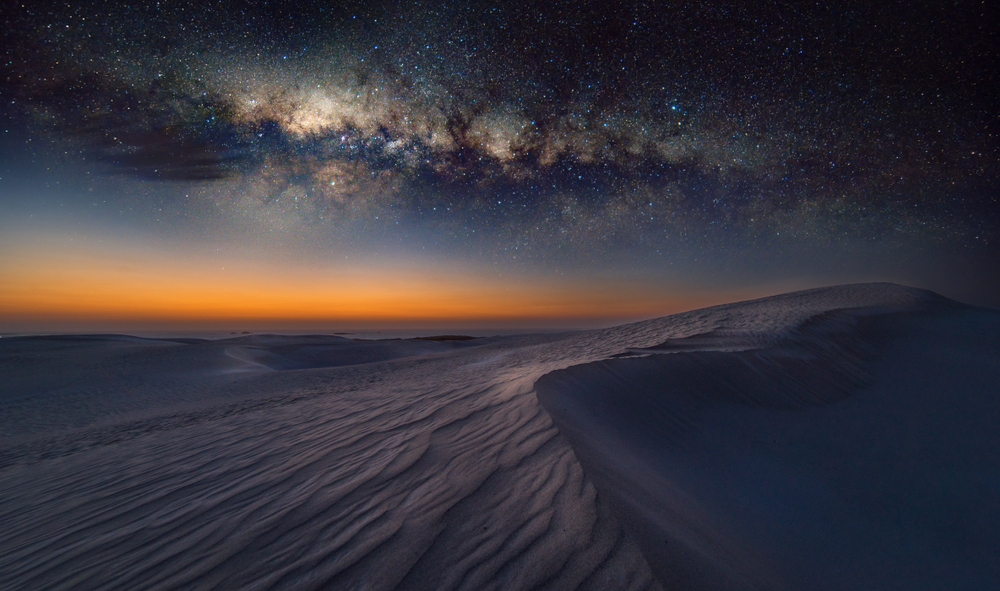Deserts do get cold at night due to their lack of moisture and vegetation, which makes it difficult for them to retain heat. The extreme temperature fluctuations that occur in deserts are often one of the most surprising discoveries for people who visit them for the first time.
Although deserts are often associated with high temperatures and aridity, they can become very cold at night. Due to the lack of humidity in the air, the heat that the ground has been retaining during the day quickly escapes into space at night, leading to a drastic temperature drop.
In this article, we will look at how deserts get cold at night, what factors contribute to this change in temperature, and how the resulting climate affects life in the desert.

Credit: www.worldatlas.com
The Nature Of Deserts: Hot And Dry Climates
Deserts are usually known for their hot and dry climate, but have you ever wondered if deserts get cold at night? Well, the answer is yes. Despite being extremely hot during the day, desert temperatures can drop dramatically at night.
Definition And Explanation Of Desert Climates
Deserts are areas that receive very little precipitation – typically less than 10 inches per year. Because there is little moisture in the air, deserts are often dry and arid. However, not all deserts are hot. Some deserts, such as the gobi desert in mongolia, can have extremely cold temperatures.
Understanding The Atmospheric Processes That Create Desert Climates
Desert climates are created by two things: atmospheric circulation and geography. The atmosphere is heated by the sun and causes air to rise. As the air cools, it falls back to the ground, creating high-pressure zones. These zones cause dry air to move away from the area, ultimately creating a desert.
The geography of the area also plays a role in desert formation, with mountainous areas often creating rain shadows that prevent moisture from penetrating the area.
Desert Regions Across The Globe
Deserts can be found on every continent of the world, except for europe. Some of the most famous deserts include the sahara in africa, the mojave in the united states, and the arabian desert in the middle east. However, there are many other lesser-known desert areas around the world.
Here are a few examples:
- The patagonian desert in argentina and chile
- The antarctic desert
- The namib desert in namibia
- The atacama desert in chile
Deserts may be hot and dry, but they are also unique and fascinating areas with their own distinct ecosystems. So, if you ever find yourself in a desert, remember to bring a jacket for those cold nighttime temperatures!
Temperature Variations In Deserts
How Do Deserts Get Hot?
Deserts are areas that receive very little rainfall, which leads to sparse vegetation and bare ground. As a result, the intense sunshine and the earth’s radiation heat up the desert surface, leading to scorching daytime temperatures. Deserts can get hot because of the following reasons:
- Lack of water vapor: Deserts receive little rainfall and have extremely low humidity. This causes the sun’s heat to be absorbed and reflected back into the atmosphere, causing a rapid buildup of heat in the area.
- Clear skies: Deserts are usually cloud-free and have clear skies. This creates ideal conditions for the sun’s rays to penetrate deep into the earth’s surface, leading to high temperatures.
- Albedo effect: Since deserts have little vegetation and are made up of bare ground, most of the sun’s radiation is absorbed rather than reflected back. This leads to a significant increase in temperature, especially during the day.
Notable Temperature Fluctuations During The Daytime And Nighttime
One common misconception is that deserts are hot all the time. However, deserts experience wide temperature fluctuations between day and night. While the daytime temperatures in the desert are usually scorching, the nighttime temperatures can fall significantly. Here are a few notable temperature fluctuations in deserts:
- Extreme daytime temperatures: The heat in deserts can be unbearable during the day. The temperature can exceed 100 degrees fahrenheit or 37 degrees celsius, depending on the region.
- Significant nighttime temperature drop: At night, the temperatures in deserts drop considerably, and it can get pretty chilly. It’s not uncommon for the nighttime temperature to fall below freezing in some desert areas.
- Wide temperature variations: Deserts can experience a significant temperature variation between the daytime and nighttime, typically between 20-30 degrees celsius. This sudden change in temperature can be challenging and uncomfortable for some animals and plants.
Factors Affecting Desert Nighttime Temperature Fluctuations
While daytime temperatures in the desert can be explained by the reasons mentioned earlier, for nighttime temperature fluctuations, various factors come into play. Here are some of the essential factors affecting desert nighttime temperatures:
- Low humidity: Since deserts have low humidity, the lack of water vapor causes the atmosphere to cool down rapidly at night.
- Clear skies: The same clear skies that result in intense daytime heat also contribute to rapid cooling at night. The absence of clouds allows heat to escape back into space quickly.
- Heat retention: During the day, the sunlight heats up the desert surface, and the heat is retained within the surface layers of sand or soil. At night, this heat is lost, leading to a rapid drop in temperature.
- Elevation and latitude: The higher the altitude and the closer the desert location is to the poles, the colder the nighttime temperatures can be. This is because the atmosphere is thinner at higher elevation, and the polar regions receive less solar radiation.
Desert temperatures vary wildly, with extremely high daytime temperatures and significant nighttime temperature drops. Factors like humidity, clear skies, heat retention and the altitude and latitude of a region can all affect desert nighttime temperatures. Understanding these factors can help you plan and prepare for a desert climate.
Do Deserts Get Cold At Night?
Understanding The Science Behind Desert Evening Temperature Changes
Many people perceive deserts to be excessively hot during the day and warm even at night. However, it is not true. In reality, desert climates are dry and display extreme temperature variations, with temperature fluctuations of up to 50° f in a single day.
During the day, the sun’s rays heat the ground, which in turn warms the air above the surface. As we progress into the night, the desert’s dry air causes the heat to dissipate rapidly, making the temperature drop drastically. The night’s temperature depends on various factors such as wind speeds, cloud cover, and humidity levels.
Debunking The Myth: Why Deserts Don’T Stay Warm Throughout The Night
The idea of deserts being warm throughout the night is a common assumption, but it is a myth. Here are some reasons why deserts can feel much colder at night:
- Lack of humidity: Desert areas are usually devoid of moisture in the air. This lack of moisture means that when the sun goes down, the lack of humidity makes the temperature drop drastically due to the dryness of the air.
- Clear sky: Deserts are generally dry, open spaces, meaning there is no cloud cover to keep the warmth within the system.
- Soil temperature: At night, the hot sands start to cool down, and the heat gets absorbed in the desert’s soil, which makes the air around it cooler.
Ways To Stay Warm In Deserts At Night
If you ever find yourself in the desert at night, it’s essential to know how to keep yourself warm. Here are some tips to consider:
- Clothing: Wear warm layers of clothing like a thermal jacket, gloves, and socks. They will work to keep your body heat inside while protecting you from the cold.
- Sleeping bags: Use a thermal sleeping bag to protect yourself from the cold ground and to help retain your body heat. Additionally, put a thermal pad or blanket below the sleeping bag to keep it warm.
- Bonfire: Gather some dry materials to make a bonfire. The heat and light that come from the fire will keep you warm and keep any wild animals at bay too.
- Shelter: If possible, make yourself a shelter. Try to find a cave or an overhanging rock or carry a small tent or tarp to protect yourself from the wind and cold.
So, if you were ever wondering if deserts get cold at night, you now know that they do. Understanding the science behind the desert’s evening temperature changes and following some basic tips can make your visit to the desert more enjoyable and safe.
Frequently Asked Questions For Does Desert Get Cold At Night?
How Cold Can The Desert Get At Night?
Temperatures in the desert can drop as low as below freezing at night.
What Factors Affect Nighttime Desert Temperatures?
Cloud cover, humidity levels, and elevation all affect how cold the desert gets at night.
How Can I Stay Warm In The Desert At Night?
Dress in layers, use a well-insulated sleeping bag, and consider bringing a tent or shelter to shield against wind.
Conclusion
After a detailed exploration of whether deserts get cold at night, it is safe to conclude that they indeed do. Despite the high temperatures experienced during the day, deserts tend to have low humidity which leads to a rapid loss of heat at night.
The desert surfaces that were heated up during the day lose that heat fairly quickly when exposed to the cold, clear night. This sudden lack of heat causes a drastic drop in temperature, leading to a chilly and cold night.
Understanding the conditions and temperatures of desert areas is crucial when planning on activities or outdoor adventures in these regions. While visitors to the desert may not need to bring winter coats, it is essential to pack appropriately to avoid being unprepared for the cold desert nights.
Heat is just one aspect of the desert; an equal consideration must be made for the colder nights that follow.




